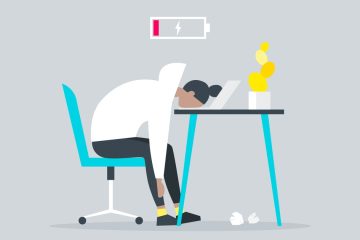Sleep procrastination, also known as bedtime procrastination, is a common challenge and refers to the difficulty of initiating and maintaining a regular sleep routine, often leading to insufficient and disrupted sleep patterns. ADHDers tend to struggle with this issue more frequently than the general population. Understanding the reasons why and implementing effective strategies can significantly improve sleep quality and overall well-being.
What’s happening in the ADHD brain?
Several factors contribute to sleep procrastination in ADHDers:
Executive Functioning Challenges: when planning, organisation, and time management doesn’t come naturally, setting a consistent sleep schedule and sticking to it is hard.
Hyperactivity and Impulsivity: Restlessness and impulsivity can lead to engaging in stimulating activities, such as late-night screen time or snacking, which disrupt bedtime.
Delayed Sleep Phase: Many ADHDers have a naturally delayed sleep-wake cycle. This means their bodies naturally gravitate towards later bedtimes and wake times, making it difficult to align their schedules with societal norms.
Stimulant Medications: Some ADHDers take stimulant medications, which can affect sleep patterns, especially if taken later in the day.
Strategies to Overcome Sleep Procrastination
1. Establish a Consistent Routine:
Set a regular bedtime and wake-up time, and stick to it every day, including weekends. Use alarms and reminders to help you stay on track.
2. Create a Relaxing Bedtime Ritual:
Develop a soothing routine such as reading a book, taking a warm bath, a cup of herbal tea, wind down yoga (lots on YouTube) or practicing relaxation exercises to signal to your brain that it’s time to wind down. The Insight Timer app has a huge variety of sleep tracks from rain noises to guided visualisations to experiment with to find what works for you.
3. Limit Screen Time:
The blue light emitted by screens can interfere with the production of melatonin, a hormone that regulates sleep. If you can, avoid screens for at least an hour before bedtime. Whilst working on reducing screen time before bed, use a blue light filter if your screen has that setting.
4. Organise Your Environment and Your Senses:
Make your bedroom a peaceful and clutter-free space, conducive to relaxation and sleep. Consider sensory needs – do you need a weighted blanket, socks, ear plugs, an eye mask, a separate duvet, white noise or a familiar story playing?
5. Avoid Stimulants:
If you’re taking stimulant medications, discuss the timing with your prescriber to ensure they don’t disrupt your sleep.
6. Time Management Techniques:
Use strategies like time blocking or the Pomodoro technique during the day to increase productivity and decrease the need to work or study late into the night.
7. Therapy:
Consider therapy to help address negative thought patterns and behaviors related to sleep. Is doom-scrolling enabling you to avoid some uncomfortable thoughts? Are you worried about something? Or are you having enough fun/relaxation/connection/stimulation in your daily life? Sometimes a lack of these things can lead to leaning into it at bedtime when it’s quiet and less demanding.
8. Exercise Regularly:
Engaging in physical activity during the day can help regulate your sleep-wake cycle and improve sleep quality. However, avoid vigorous exercise close to bedtime.
9. Diet and Nutrition:
Heavy meals, caffeine, and alcohol close to bedtime can disrupt sleep.
10. Seek Professional Help:
If sleep procrastination is severely affecting your daily life, consult your GP. They can provide further guidance and may suggest medication or additional therapies.


